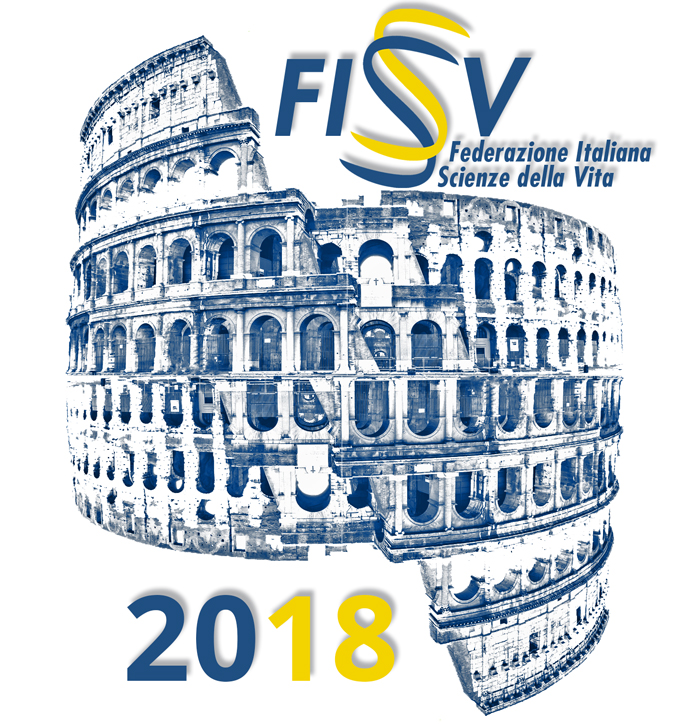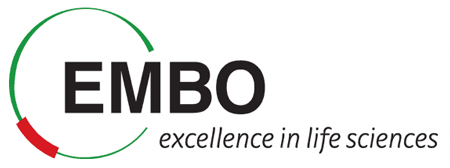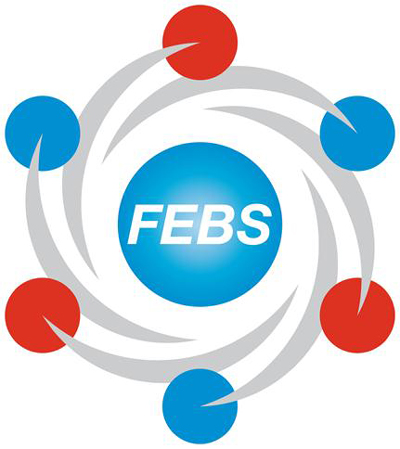



Tuesday, 18 September |
|
|---|---|
11:00-13:00 |
Registration |
13:30-13:50 |
Opening & Welcome [Aula Magna] Eugenio Gaudio (Rector, Sapienza University of Rome) Gennaro Ciliberto (FISV President) |
13:50-14:00 |
Tribute to Luigi Luca Cavalli-Sforza: a Pioneering Geneticist [Aula Magna] Lucio Luzzatto (Muhimbili University of Health and Allied Sciences, Tanzania) |
14:00-15:00 |
 The EMBO Keynote Lecture [Aula Magna] Chair: Valeria Poli (Turin) Wolf Reik (The Babraham Institute and University of Cambridge, Cambridge, UK) Single cell epigenome landscape of development and ageing |
15:00-17:00 |
Plenary Symposium [Aula Magna] Chairs: Alex Costa (Milan), Rodolfo Costa (Padua) Amita Sehgal (Howard Hughes Medical Institute and University of Pennsylvania, USA) How do clocks control behavior and physiology: insights from a small animal model Jay C. Dunlap (Geisel School of Medicine at Dartmouth, Hanover, NH, USA) The regulatory network governing global responses to changes in light and time Alex A. R. Webb (University of Cambridge, UK) Dynamic plasticity of circadian oscillators |
17:00-17:30 |
Coffee break [Terrace] |
17:30-19:30 |
Round Table [Aula Magna • This session will be in Italian] Chair: Anna Meldolesi (Corriere della sera, CRISPeR Mania) Anna Cereseto (Università di Trento) |
19:30-20:30 |
Welcome Cocktail [Terrace] |
Wednesday, 19 September |
|
|---|---|
8:30-11:30 |
Short talks by participants (Session I) |
8:30-10:00 |
Environmental Microbiology and Biotechnology [Aula P1] Chairs: Duccio Cavalieri, Teresa Rinaldi Annamaria Bevivino (Rome) Bruno Casciaro (Rome) Simona Crognale (Rome) Giovanni Bacci (Sesto Fiorentino, FI) Francesca D'Angelo (Rome) |
10:00-11:30 |
Genetics of Microorganisms [Aula P1] Chairs: Francesco Imperi, Renato Fani Sarah Hijazi (Rome) Alice Checcucci (Sesto Fiorentino, FI) Olivier Jousson (Trento) Paola Sperandeo (Milan) Alessandra Fortuna (Rome) |
8:30-10:00 |
Genomics, Proteomics and Systems Biology [Aula C – Biochimica, 2° Floor] Chairs: Andrea Bellelli, Graziano Pesole Federico Martinelli (Palermo) Marco Russo (Bologna) Federica Zinghirino (Catania) Elisa Margherita Maffioli (Milan) Marcello Manfredi (Alessandria) |
8:30-10:00 |
Chromosome Biology, Cell Division and Cell Cycle [Aula Montalenti – Genetica] Chair: Giulia Guarguaglini Valeria Palumbo (Rome) Patrizia Lavia (Rome) Ferdinando Di Cunto (Orbassano, TO) Patrizia Sarogni (Pisa) Veronica Ferrucci (Naples) |
10:00-11:30 |
DNA Replication, Repair and Recombination [Aula Montalenti – Genetica] Chairs: Antonio Musio, Ennio Prosperi Serena Montalbano (Parma) Anita Palma (Rome) Antonella Porrazzo (Rome) Elisa Palumbo (Padua) Giulio Ticli (Pavia) |
8:30-10:00 |
Oncogenes and Tumor Suppressors [Aula Magna] Chairs: Sara Cabodi, Miriam Martini Giulia Bon (Rome) Amani Bouzidi (Rome) Viola Calabrò (Naples) Lidia Chellini (Rome) Silvia Soddu (Rome) |
10:00-11:30 |
Cellular Stress, Apoptosis and Autophagy [Aula Magna] Chairs: Daniela Barilà, Lucia Morbidelli Romina Burla (Rome) Andrea Guarino (Naples) Alberto Inga (Trento) Marialuisa Piccolo (Naples) Gaetana Paolella (Fisciano, SA) |
8:30-10:00 |
Transcriptional Mechanisms and Epigenetic Modifications [Aula Giacomini – Botanica] Chairs: Giacomo Donati, Aymone Gurtner Michele Menotta (Urbino) Veronica Ruta (Rome) Annalisa Roberti (Pavia) Elisa Coluzzi (Rome) |
10:00-11:30 |
Non-coding RNA [Aula Giacomini – Botanica] Chairs: Alessandro Fatica, Francesca Orso Silvia Biscarini (Rome) Neri Mercatelli (Rome) Simone Detassis (Trento) Giorgio Dieci (Parma) Lidia Villanova (Rome) |
8:30-10:00 |
Plant Nutrition and Biofortification [Aula A – Fisiologia Generale] Chairs: Laura De Gara, Anita Zamboni Francesca Cardinale (Grugliasco, TO) Sara Cimini (Rome) Flaviana Marzano (Bari) Pasqualina Woodrow (Caserta) Sezen Yilmaz-Sarialtin (Ankara, Turkey) |
10:00-11:30 |
Photosynthesis, Metabolism and Environmental Stress [Aula A – Fisiologia Generale] Chairs: Cinzia Bertea, Nicola Tomasi Giulia Russo (Grugliasco, TO) Cecilia Brunetti (Sesto Fiorentino, FI) Libero Gurrieri (Bologna) Davide Marzi (Rome) Alberta Pinnola (Verona) |
11:30-12:00 |
Coffee break [Terrace] |
12:00-13:00 |
Plenary Lecture [Aula Magna] Chair: Omar Rota-Stabelli (Trento) Alexei Maklakov (University of East Anglia, Norwich, UK) |
13:00-13:15 |
SARTORIUS Short Talk [Aula Magna] T. Claudio Bencivenga (Milan) |
13:15-14:30 |
Lunch time and Posters viewing (Session I) |
14:30-16:30 |
Plenary Symposium [Aula Magna] Chair: Alessandra Polissi (Milan), Roberto Sitia (Milan) Frédéric Barras (Institut Pasteur, Paris, France) Roberto Sitia (Università Vita-Salute San Raffaele, Milan) Alessandro Giuffrè (CNR-IBPM, Rome) Giovanna De Chiara (CNR, Rome) |
16:30-17:00 |
Coffee break [Terrace] |
17:00-19:00 |
Parallel Symposia 1. Emergence and Spread of Archaic and Modern Humans: News from Bones and Genomes [Aula P1] Chairs: Antonio Torroni (Pavia), Luca Sineo (Palermo) Giorgio Manzi (Sapienza University of Rome) Robert Foley (University of Cambridge, UK) Carles Lalueza-Fox (CSIC-University Pompeu Fabra, Barcelona, Spain) Cristian Capelli (University of Oxford, UK) 2. Genetic and Epigenetic Mechanisms Regulating Transgenerational Inheritance [Aula Magna] Chairs: Michele Morgante (Udine), Antonella Russo (Padua) Marco Barchi (University of Rome Tor Vergata) EMBO Young Investigator Lecture James Hackett (EMBL, Monterotondo, Rome) EMBO Young Investigator Lecture 3. Proteins as Drug Target and Drugs, and Protein Degradation as a Therapeutic Strategy [Aula Giacomini – Botanica] Chairs: Alberto Boffi (Rome), Andrea Mozzarelli (Parma) Giuseppe Zanotti (University of Padua) Antonella Isacchi (Nerviano Medical Sciences, Milan) Cecilia Weigelt (Biotech Research & Product Development, Chiesi Group, Lidingo, Sweden) Alessio Ciulli (University of Dundee, Scotland, UK) 4. Crossing Biological Barriers, in Health and Disease [Aula Montalenti – Genetica] Chairs: Massimo Masserini (Milan), Vito De Pinto (Catania) Francesca Re (University of Milano-Bicocca) Sara Nicoli (University of Parma) Valeria Dall’Asta (University of Parma) Krisztina Herédi-Szabó (SOLVO Biotechnology, Budaörs, Hungary) |
19:00-21:00 |
Societies' time AGI [Aula Magna] 19:00 Premio AGI "Ferruccio Ritossa" 2018 e presentazione del lavoro premiato SIBV [Aula Montalenti – Genetica] Premi 2018: Assemblea Sociale SIMAG [Aula Giacomini – Botanica] Assemblea dei soci |
Thursday, 20 September |
|
|---|---|
8:30-11:30 |
Short talks by participants (Session II) |
8:30-10:00 |
Development, Differentiation and Ageing [Aula Sergi – Antropologia, 1° Floor] Chairs: Daniele Condorelli, Fulvio Della Ragione Adriana Borriello (Naples) Marina Bruno (Florence) Roberta Cascella (Florence) Stefania Martucciello (Fisciano, SA) Rebecca Piccarducci (Pisa) |
10:00-11:30 |
Stem Cells, iPS, Cancer Stem Cells [Aula Sergi – Antropologia, 1° Floor] Chairs: Gianni Cuda, Gabriele Stocco Maria Giovanna Garone (Rome) Chiara Giacomelli (Pisa) Giusj Pugliese (Rome) Alessandro Rosa (Rome) Federico Salaris (Rome) |
8:30-10:00 |
Metabolism and its Regulation in Health and Diseases [Aula C – Biochimica, 2° Floor] Chairs: Mauro Magnani, Luigi Palmieri Giulia Guiducci (Rome) Alessio Menga (Bari) Vito Porcelli (Bari) Karim Zuhra (Rome) Gianluca Mattei (Florence) |
8:30-10:00 |
Human Genetics and Genomic Diversity [Aula Montalenti – Genetica] Chairs: Alessandro Achilli, Luca Pagani Michela Leonardi (Cambridge, UK) Angelica Macauda (Pisa) Manuel Gentiluomo (Pisa) Marco Capodiferro (Pavia) Linda Ongaro (Tartu, Estonia) |
10:00-11:30 |
Evolutionary Biology [Aula Montalenti – Genetica] Chairs: Giorgio Manzi, Marco Oliverio Valeria Russini (Rome) Omar Rota Stabelli (San Michele all'Adige, TN) Roberto Feuda (Bristol, UK) Costantino Buzi (Rome) |
8:30-10:00 |
Neurobiology and Neuropharmacology [Aula A – Fisiologia Generale] Chairs: Giulia Piaggio, Giorgio Racagni Carlo Brighi (Rome) Anna Maria Lucianò (Rome) Claudia Colussi (Rome) Serena Faggiano (Parma) Ciro Iaccarino (Sassari) |
10:00-11:30 |
Nutrition Biochemistry [Aula A – Fisiologia Generale] Chairs: Francesco Bonomi, Silvana Hrelia Paola Antonia Corsetto (Milan) Simone Luti (Florence) Laura Giusti (Pisa) Stefania Iametti (Milan) Pasquale Marrazzo (Rimini) |
8:30-10:00 |
Immunology and Host-Pathogen Interaction [Aula Magna] Chairs: Fiorentina Ascenzioni, Paolo Visca Duccio Cavalieri (Sesto Fiorentino, FI) Marta Kinga Lemieszek (Lublin, Poland) Maria Luisa Mangoni (Rome) Luca Cavinato (Rome) Federica Runci (Rome) |
10:00-11:30 |
Plant Development and Disease [Aula Magna] Chairs: Franco Faoro, Michela Zottini Alex Costa (Milan) Cristina Ruberti (Muenster, Germany) Anna Fiorillo (Rome) Federica Locci (Rome) Vincenzo Lionetti (Rome) |
8:30-10:00 |
Biotransformations [Aula Giacomini – Botanica] Chairs: Loredano Pollegioni, Raffaele Porta Paola Branduardi (Milan) Mohammed Sabbah (Naples) Valeria Vecchi (Verona) Andrea Franzetti (Milan) Sara Ragucci (Caserta) |
10:00-11:30 |
Glycoconjugates [Aula Giacomini – Botanica] Chairs: Alberto Passi, Eugenia Schininà Livia Cabitta (Milan) Ilaria Caon (Varese) Elena Caravà (Varese) Michela Pucci (Bologna) |
11:30-12:00 |
Coffee break [Terrace] |
12:00-13:00 |
Plenary Lecture [Aula Magna] Chair: Mario Pezzotti (Verona) Luis Herrera Estrella (LANGEBIO, Mexico) |
13:00-13:15 |
SENECO Short Talk [Aula Magna • this talk will be in Italian] Ettore Senes (Milan) |
13:15-14:30 |
Lunch time and Posters viewing (Session II) |
14:30-16:30 |
Plenary Symposium [Aula Magna] Chairs: Roberto Barale (Pisa), Guglielmina Nadia Ranzani (Pavia) Wolfgang Meyerhof (Saarland University, Homburg, Germany) Catia Sternini (UCLA, Los Angeles, CA, USA) Paolo Gasparini (University of Trieste) Darren Logan (Wellcome Trust Sanger Institute, Cambridge, UK) |
16:30-17:00 |
Coffee break [Terrace] |
17:00-19:00 |
Parallel Symposia 1. RNA Biology [Aula A – Fisiologia Generale] Chairs: Irene Bozzoni (Rome), Salvatore Oliviero (Turin) Danny Incarnato (IIGM, Turin) Gian Gaetano Tartaglia (Centre for Genomic Regulation and ICREA, Barcelona, Spain) Julie Martone (Sapienza University of Rome) 2. Inflammation and Disease [Aula Magna] Chairs: Carlo Riccardi (Perugia), Paolo Pinton (Ferrara) Cecilia Garlanda (Humanitas University, Milan) Francesco Di Virgilio (University of Ferrara) Maria Lina Bernardini (Sapienza University of Rome) Stefano Bruscoli (University of Perugia) 3. Carbon Cycle and Climate Change: the Future [Aula Montalenti – Genetica] Chairs: Luca Espen (Milan), Sergio Esposito (Naples) Maria De Nobili (University of Udine) Nick Ostle (Lancaster University, UK) Mauro Centritto (IVALSA, CNR, Florence) Rémi Lemoine (CNRS and University of Poitiers, France) |
21:00 |
Social dinner [Ristorante La Limonaia] |
Friday, 21 September |
|
|---|---|
8:30-10:30 |
Plenary Symposium [Aula Magna] Chairs: Marcello Donini (Rome), Franco Faoro (Milan) Emanuela Noris (CNR, Turin) Julian K-C. Ma (St. George’s, University of London, UK) Selene Baschieri (ENEA Centro Ricerca Casaccia, Rome) Linda Avesani (University of Verona) |
10:30-11:30 |
Plenary Lecture [Aula Magna] Chair: Bianca Colonna (Rome) Josep Casadesús (University of Seville, Spain) |
11:30-11:45 |
SEQUENTIA BIOTECH Short Talk [Aula Magna] Walter Sanseverino (Barcelona, Spain) |
11:45-12:00 |
Coffee break [Terrace] |
12:00-14:00 |
Plenary Symposium [Aula Magna] Chairs: Matteo Barberis (Amsterdam, The Netherlands), Pier Luigi Martelli (Bologna)  FEBS National Lecturer - Luis Serrano Pubul (Centre for Genomic Regulation, Barcelona, Spain) Matteo Barberis (University of Amsterdam, The Netherlands) Davide Cacchiarelli (TIGEM, Napoli) Adil Mardinoglu (KTH Royal Institute of Technology, Stockholm, Sweden) |
|
Poster Prizes and Closing Remarks [Aula Magna] |
15:00-17:00 |
Societies' Time SIBV [Aula Giacomini – Botanica] Elevator Pitch Session SIMGBM [Aula Magna] Consegna Premi Franco Tatò e Mario Campa 2018 |
When preparing your poster, please remember that its maximum size is 95 x 115 cm (width x height).
Correct format... 
 Wrong format...
Wrong format...